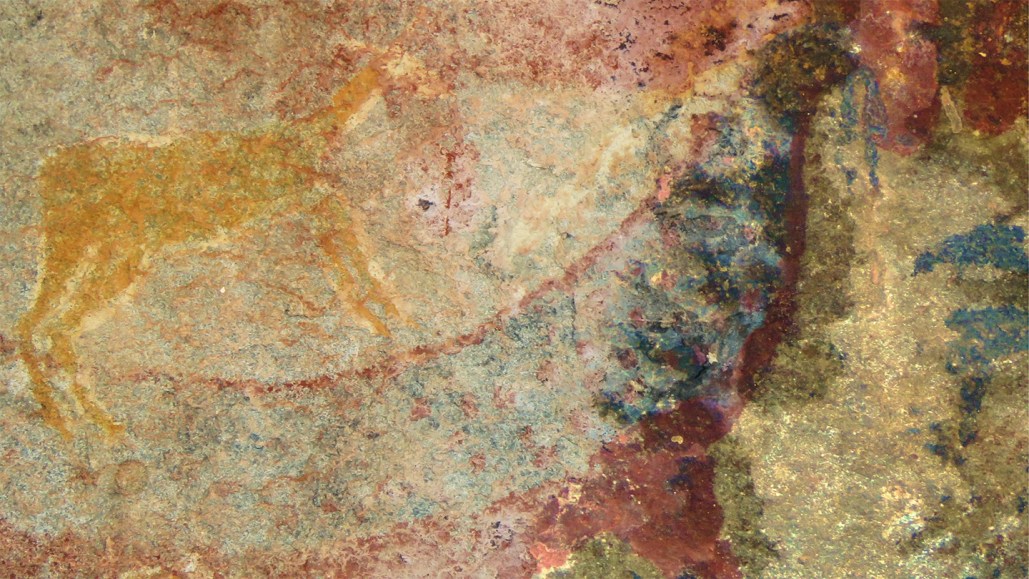"Ancient Fossils Could Have Sparked Inspiration for Cave Art"

African rock art depicting a mythical tusked creature may mirror the look of fossils of real-life ancient mammal relatives called dicynodonts.
Abundant, exposed fossils in South Africa’s Karoo Basin include dicynodont skulls with tusks that curve down and back, like those of the long-bodied animal depicted in roughly 200-year-old rock art by the region’s San hunter-gatherers, says paleontologist Julien Benoit. That painting appears among images drawn on a rock-shelter wall, dubbed the Horned Serpent panel, which include a scene of ethnic warfare known to have occurred as early as 1821, Benoit reports September 18 in PLOS ONE.
Science News is collecting reader questions about how to navigate our planet's changing climate.
What do you want to know about extreme heat and how it can lead to extreme weather events?
San people painted the rock art panel between 1821 and 1835, he estimates.
“The tusked animal painting may represent a rain animal, a fantastic creature linked to San rain-making folklore,” says Benoit, of University of the Witwatersrand, Johannesburg.
San myths describe large animals that once inhabited southern Africa before disappearing. If dicynodont fossils influenced painters of the tusked rock art figure, then that portrayal preceded the first scientific description of dicynodonts in 1845.
Dicynodonts generally lived from around 270 million to nearly 200 million years ago. Researchers have found San stone tools on several eroding outcrops containing dicynodont fossils. Those sites lie within 100 kilometers of the Horned Serpent panel.
Few clues exist about the extent to which Indigenous Africans have collected animal fossils and incorporated them into spiritual beliefs and rock art (SN: 10/5/96).
At Lesotho’s Mokhali Cave, located near preserved dinosaur footprints and fossils, San rock art includes a dinosaur footprint outline and three dinosaur silhouettes. As astute footprint interpreters, San people discerned that these creatures left no handprints or tail drag marks (SN: 6/11/15). Dinosaur silhouettes thus lacked arms and sported short tails, Benoit says.
Questions or comments on this article? E-mail us at [email protected] | Reprints FAQ
J. Benoit. A possible later stone age painting of a dicynodont (Synapsida) from the South African Karoo. PLOS ONE. Published September 18, 2024. doi: 10.1371/journal.pone.0309908.
C.W. Helm et al. Interest in geological and palaeontological curiosities by southern African non-western societies: A review and perspectives for future study. Proceedings of the Geologists’ Association. Vol. 130, October 2019, p. 541. doi: 10.1016/j.pgeola.2019.01.001.
Bruce Bower has written about the behavioral sciences for Science News since 1984. He writes about psychology, anthropology, archaeology and mental health issues.
We are at a critical time and supporting climate journalism is more important than ever. Science News and our parent organization, the Society for Science, need your help to strengthen environmental literacy and ensure that our response to climate change is informed by science.
Please subscribe to Science News and add $16 to expand science literacy and understanding.




